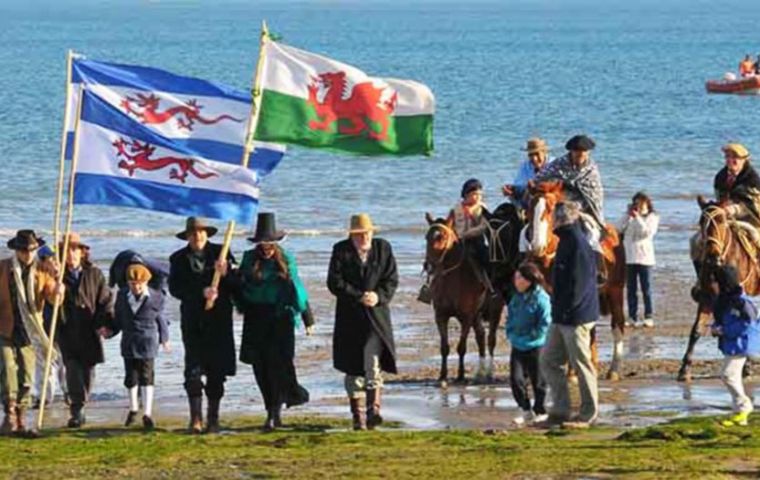MercoPress. South Atlantic News Agency
Ceremony held in Trelew for new anniversary of Welsh landing in Patagonia
 “It is important to honor those who left a legacy in the city, in the valley and in the province,” Trelew Mayor Adrián Maderna said
“It is important to honor those who left a legacy in the city, in the valley and in the province,” Trelew Mayor Adrián Maderna said Local authorities and descendants of the Welsh community in Argentine Patagonia gathered Wednesday at the city of Trelew for the celebrations marking the 156th anniversary of the beginning of the Welsh feat in Chubut.
In addition to the music festivals all over Patagonia, the main celebration was held at the San David Trelew Association.
With live music, cultural activities and the presence of the public, a new celebration was held in the framework of the 156th anniversary of the Landing of the Welsh settlers in the province.
Trelew Mayor Adrián Maderna, together with the president of the San David Association, Daniel Hughes, presided over the ceremony which was attended by a large number of high ranking local officials.
Maderna highlighted the new anniversary, taking into account, “the twinning that our town has with Caernarfon, the Welsh city where the founder of Trelew was born.”
He added: “It was a very emotional act because we were able to share a new anniversary, and it is important to honor those who left a legacy in the city, in the valley and in the province.”
The Mayor also announced that “they are working on the commemorative event of the Eisteddfod for the month of October in accordance with the anniversary month of the city.”
Tribute was also paid made to David Williams, one of the first settlers to arrive in the valley, by naming a bridge on National Route 3 after him. Present for the occasion was David Williams' great-great-grandson, Mauricio Humphreys.
July 28 also marked a new anniversary of the arrival of Catherine Roberts Davies, who was among the the first Welsh settlers in Patagonia who landed from the sailboat Mimosa, after a two month journey.
Catherine fell ill and died shortly afterwards in 1856, but her story lived yet again in 1995 when her nameless remains were found and identified through modern techniques by a scientific team who traveled to Canada and Wales in search of genetic evidence.
Roberts' fellow migrants eventually moved from the Puerto Madryn area to Rawson, leaving behind their small cemetery. And of the four children Catherine had had, only one had survived and after four years had migrated to Canada where swabs were collected swabs from a descendant and, after testing, scientists came to the conclusion that the genetic profile “matched that of Catherine by 99.8 percent,” which made it possible to add a name to the grave.




Top Comments
Disclaimer & comment rules-

Read all commentsWelsh? Interesting.
Jul 30th, 2021 - 02:52 pm 0https://www.youtube.com/watch?v=9fGS5x7Skpw&list=FLmXPTu1f8AdGlizWNiASx2A&index=1
Commenting for this story is now closed.
If you have a Facebook account, become a fan and comment on our Facebook Page!